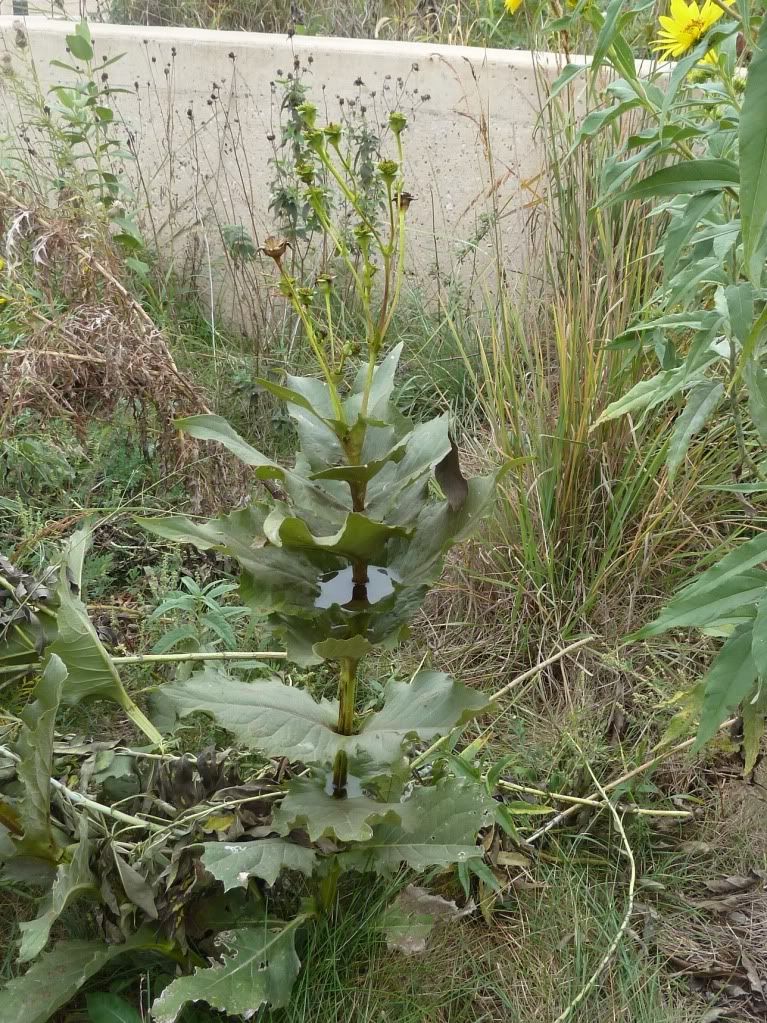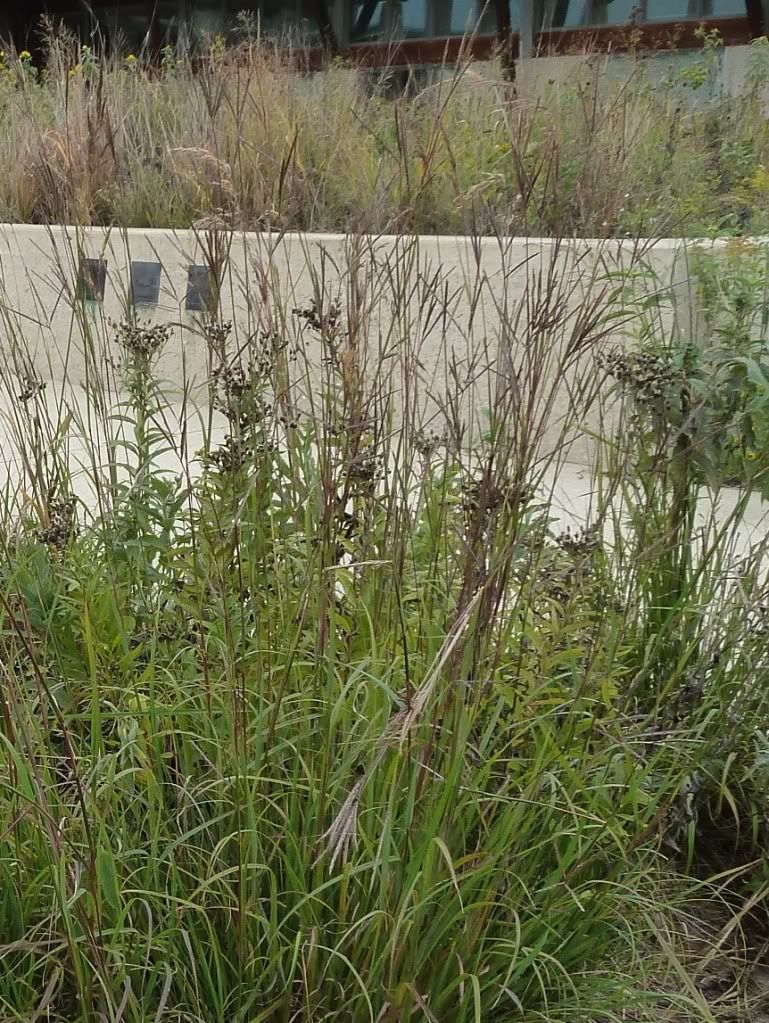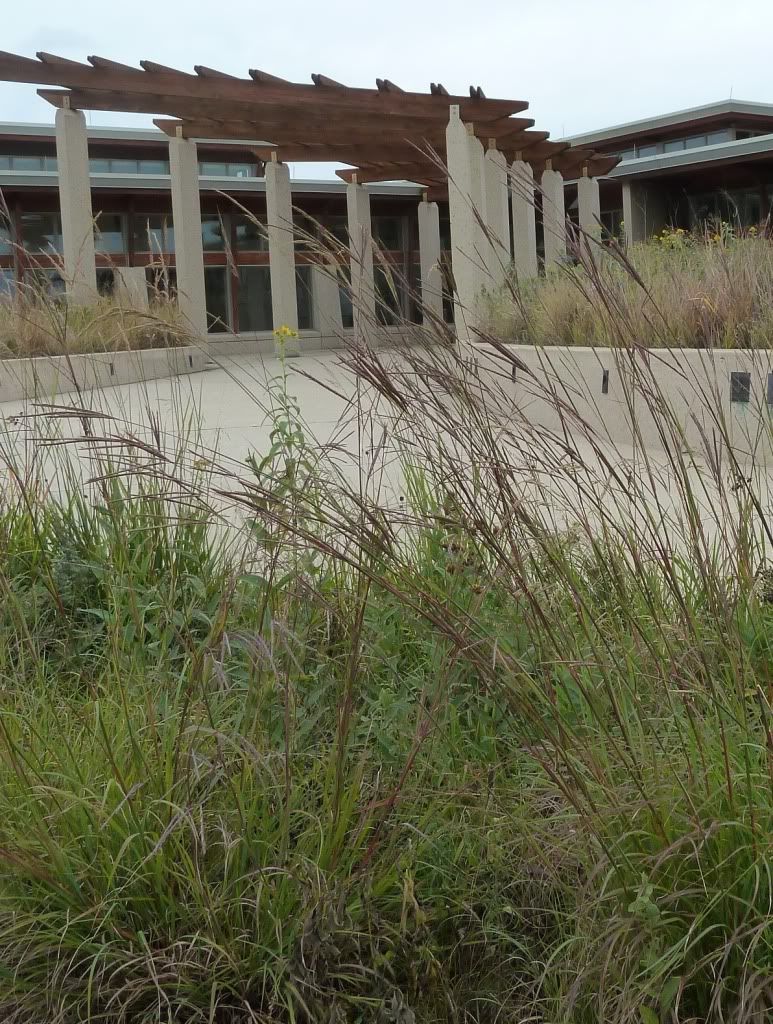In a departure from the other Bleeding Heartland wildflower posts, this week’s installment doesn’t feature any native plants in bloom. Instead, I’ve enclosed some photos I took during a recent visit to the Neal Smith National Wildlife Refuge near Prairie City. The refuge is perfect for a day trip or half-day trip in central Iowa. Even if the weather’s not ideal for walking on one of the trails, the Prairie Learning Center has a lot of good indoor exhibits, plus an excellent bookstore for anyone interested in native plants, birds, insects, or mammals. After the jump I’ve enclosed pictures of cup plant and big bluestem.
This is an open thread: all topics welcome.
Cup plant (Silphium perfoliatum) is a member of the aster family with large, yellow flowers. The blooms were long gone by the time of our September visit, but thanks to rain the previous evening, we could see why the cup plant is so important to insects and birds on the prairie: “Leaves hug the stem in such a way that they create a space where water can collect like in a cup.”
This plant is holding three little basins of water.
You can see some common milkweed in the upper left corner of this picture. According to the ranger who was our guide, the yellow flowers to the right are sawtooth sunflower (Helianthus grosseserratus).
Big bluestem (Andropogon gerardii) is one of the common grasses of the tallgrass prairie, which used to cover most of Iowa. I took these photos near the front entrance of the Prairie Learning Center, because you can see the tops of the plants better against the cement.
In Wildflowers of the Tallgrass Prairie, Sylvan Runkel and Dean Roosa write that the first part of big bluestem’s scientific name comes from the Greek “andros” (man’s) and “pogon” (beard) “probably because of the hairy appearance given to the seed heads.” The second part of the scientific name is in honor of Louis Gerard, “a French botanist of the late 1700s and early 1800s who first described this species in technical terms.”
Another common name for big bluestem is turkey foot, because the inflorescence at the top divides into three branches shaped like the foot of a large bird.





1 Comment
Nice to see Neal Smith photos
Thank you for the Neal Smith recommendation. When the Refuge was at the very beginning stages of being planned, it could easily have become just a giant pheasant factory with a few cultivar varieties of grasses and flowers. Fortunately, determined conservationists and Refuge planners turned it into a wonderful place of diverse Iowa-ecotype prairie plants and a refuge for many kinds of prairie wildlife. Such fun to visit.
PrairieFan Mon 24 Apr 12:29 PM